リズ・トーマスのハイキング・アズ・ア・ウーマン#16 / 『LONG TRAILS 〜スルーハイキングの極意〜』を出版!
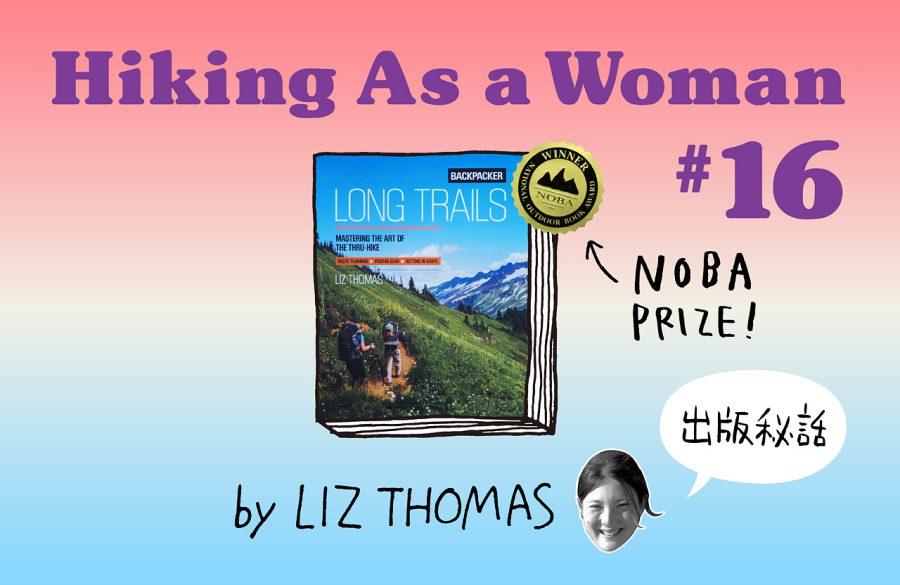
Long Trails: Mastering the Art of Thru-hike
Text : Liz Thomas Photo : Liz Thomas, Whitney LaRuffa, Caveman Collective, Kate Hoch
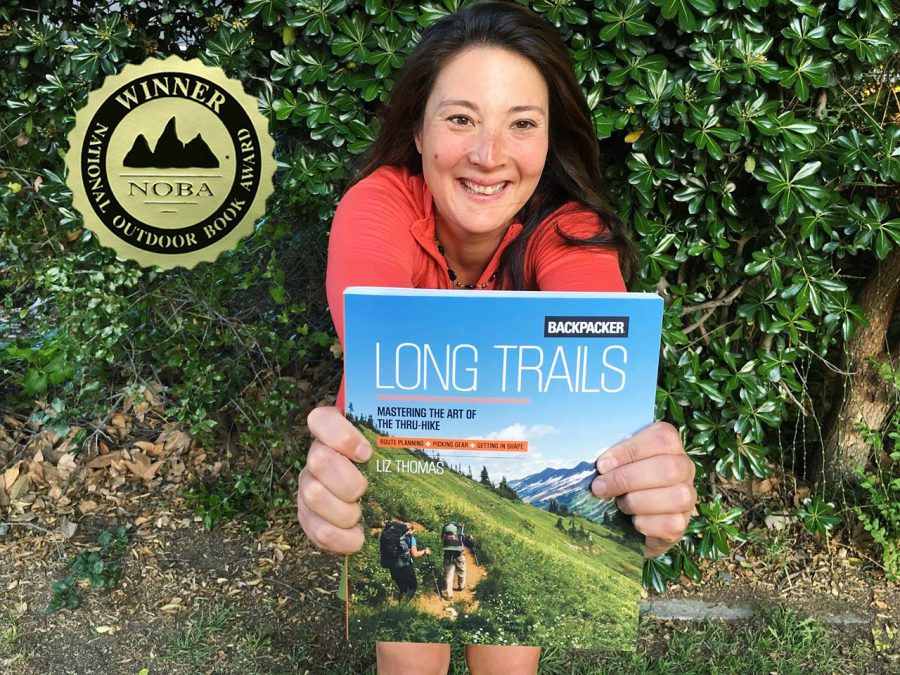
Long Trails won a National Outdoor Book Award for Best Instructional book.
When I first started thru-hiking, I couldn’t find a book that explained how to do it. I read forums on the internet, but the amount of information was overwhelming. I couldn’t tell what tips were the most important, and what were expert-level tricks that I didn’t need to know on my first thru-hike. Despite doing a lot of research on how to thru-hike, I made many mistakes on my first long trail. I started without essential gear, didn’t know how to my gear, and suffered when the weather changed. Now that I have completed more than 20 wilderness long distance hikes and teach a thru-hiking class, I have perspective on what first-time thru-hikers really need to know. I wrote Long Trails: Mastering the Art of the Thru-hike to be the book I wish had existed when I first learned how to distance backpack. It recently won the National Outdoor Book Award for Best Instructional Book with the judges calling it, “destined to become the new bible of the sport.” In Long Trails, I created a comprehensive guide to empower people to follow their dreams—to go on a long hike, even when society and their friends and family say it may be impossible.
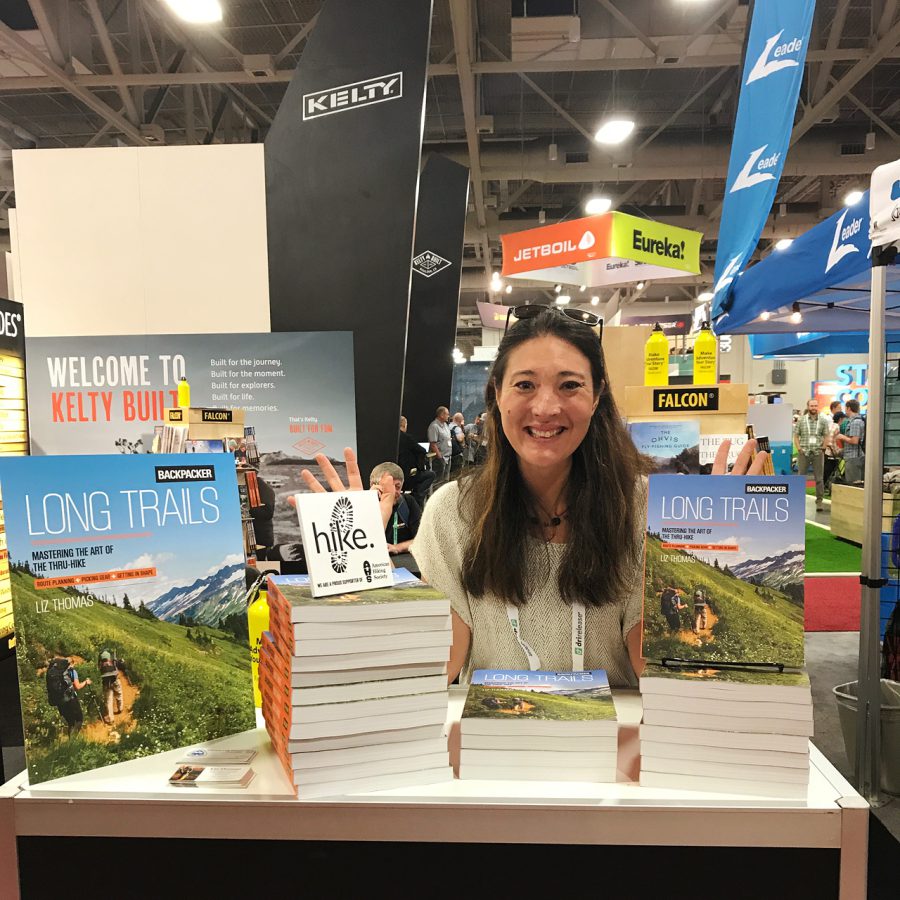
Liz Thomas with her book at Outdoor Retailer.
Just because the journey is more important than the destination doesn’t mean the journey needs to be unpleasant. I didn’t start learning to backpack until I was an adult, which made me sensitive to the process of learning how to go into nature. Learning how to backpack as an adult is different than when you learn as a child. My book is for adults who have dreamed of a thru-hike, but may not have much backpacking experience. It is also for people who have backpacking experience, but have never gone out for months at a time.
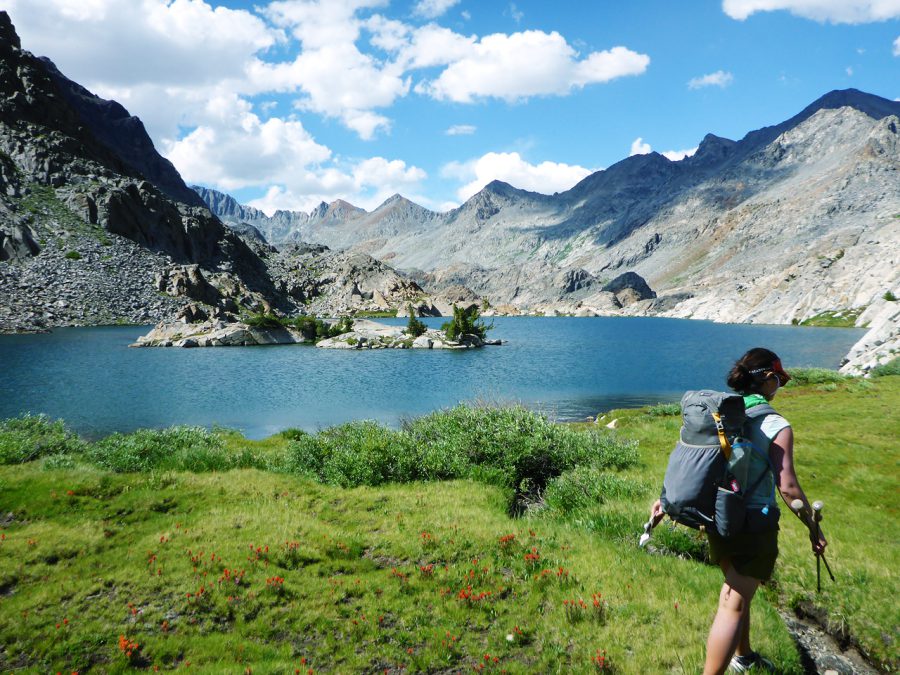
For many years, hikers have learned how to thru-hike from trial and error. I learned that way, too. But the problem with that method is that the stakes can be high. A mistake that leads to injury can make a person quit the trail—and give up on their dreams. Gear errors can be easily fixed by replacing poor gear with new gear. But gear mistakes can be expensive. My goal for Long Trails was to save people time and money, but also to prevent injuries, hurt feelings, and heartbreak. I think learning about distance hiking before you go on a trip can prevent most of the worst uncomfortable times on a thru-hike.
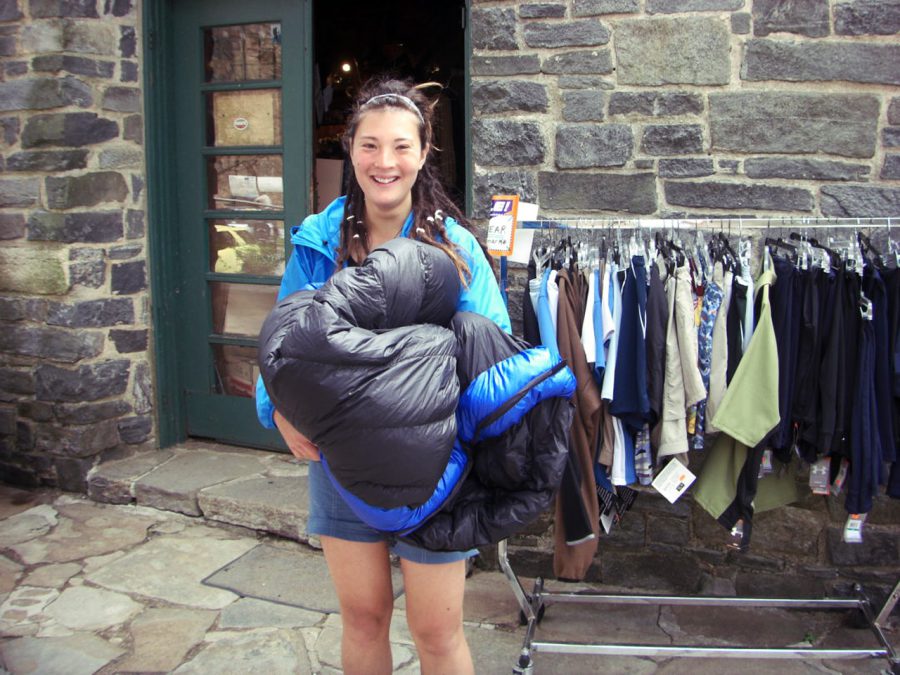
Part of what makes planning for your first thru-hike so difficult is that you don’t know what things you need to learn before you go. Most people realize that they will need to figure out gear, plan for many meals, and worry about bears. But bears and food—and even gear– are just a small part of the knowledge and planning process before a thru-hike. Food can be fun to plan, but more often than not, you don’t know what type of food will taste good to you in the backcountry until you’ve been in the backcountry for a while. Gear is also fun to plan, but I’ve seen too many people obsess about gear only to start a thru-hike without that skills that make the day-to-day process of thru-hiking more enjoyable.
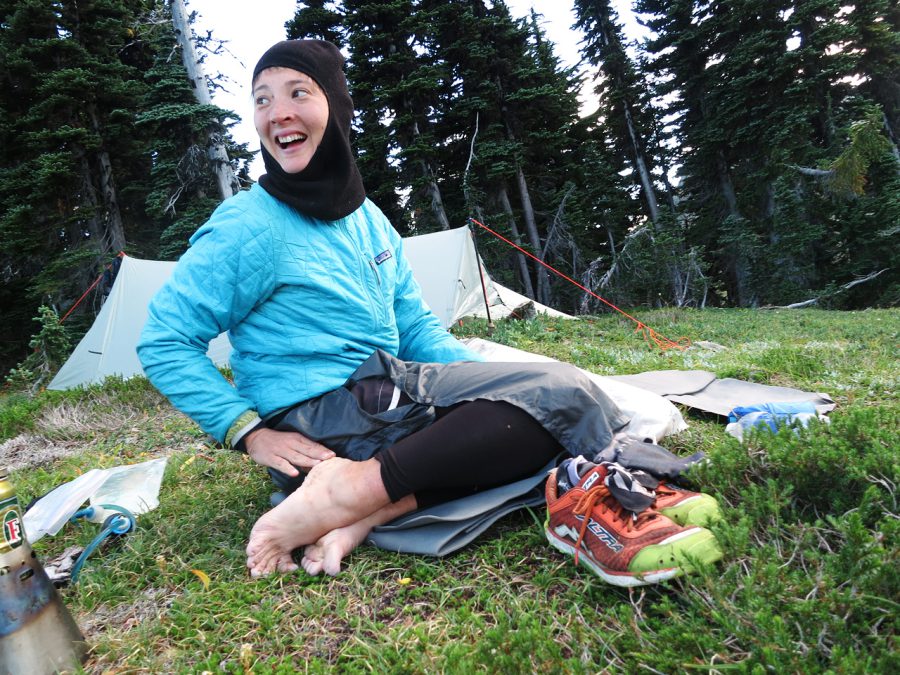
In my experience, route-planning, learning skills like how to set up a tent, and how to manage temperature changes are the day-to-day routines that can make-or-break your hike. When it comes down to it, most of your day on a thru-hike is spent walking. So while the cover of Long Trails advertises the things people know they need to learn before heading on a trail—gear and food and fitness and route planning—the inside is also filled with the tricks that most people don’t realize they should think about before they go like staying healthy in the backcountry and moisture and temperature control.
Most outdoor how-to books focus on one expert’s point of view. When I wrote Long Trails, I wanted it to be different. I think that when people see that I once held a Fastest Known Time on a long trail, they may see me and think, “I could never hike a long trail like that.” But my hope that is when a reader opens the book, even if they don’t identify with me (Snorkel), they will find others in the book that resemble their story and can inspire them to think that maybe a thru-hike is possible. When a reader sees photos of a retired person who started a trail not in great physical shape, or reads the story of the dad who has three young kids at home, or hears in her own words the story of a career woman, I hope they will think, “That person is just like me!”
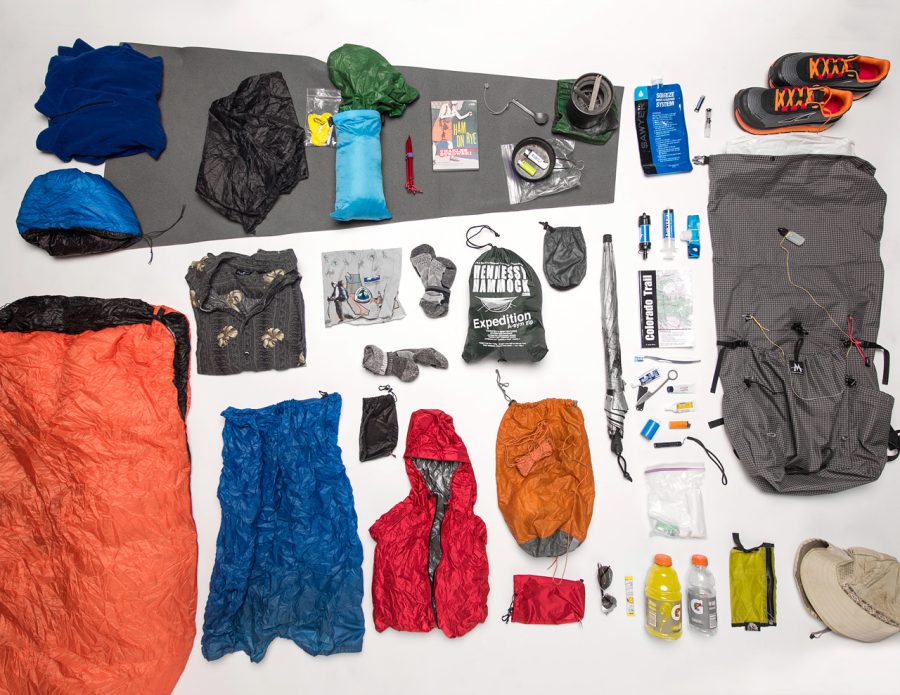
In Long Trails, I look at 5 hikers’ backpacks to show there are different gear lists for different people and types of hikes.
The book reflects the perspectives of many hikers, of different ages and physical fitness. I want to show that almost everyone is capable of going on a long hike. Some people hike faster, some slower. Some may not finish their trek. But everyone can walk farther and longer than they think they can. Hike Your Own Hike is a tenet of the book. But no one should let lack of information get in the way of making a dream come true.
When I give presentations on my hikes, the most common question people ask me is, “How do you afford the cost and time off work to take a hike?” I think many people think, “Oh, I could never find the time and money to thru-hike,” so dismiss their dreams as fantasy.
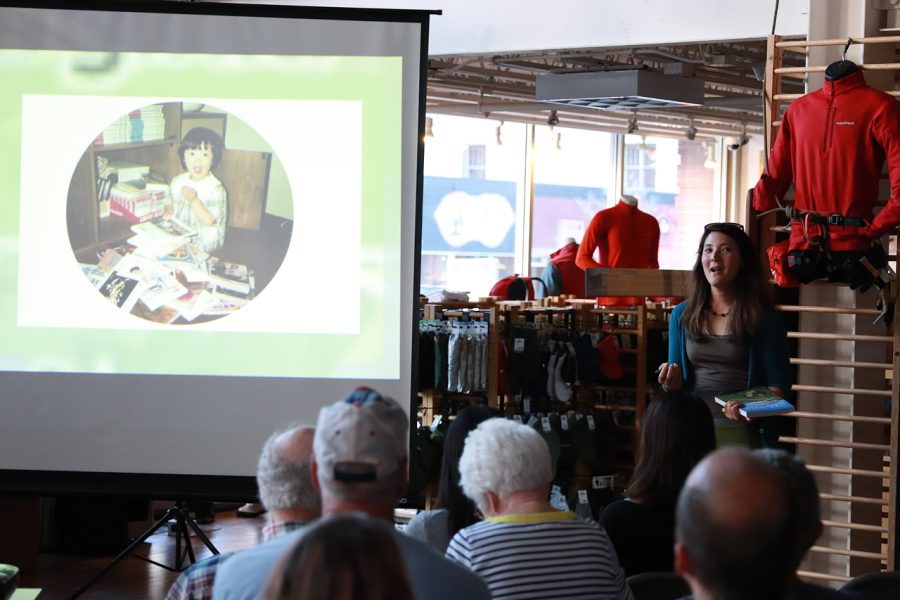
That’s why unlike most other how-to books, I delve deep into the pre-trip planning: How does a hiker save money to go for a long hike? How can a hiker quit a job to go for a long hike? How does a hiker convince their family that it is ok if they go for a walk? Who will watch a hiker’s pet or posessions while that person is on trail?
Most guidebooks pretend as if interactions with other hikers aren’t part of the experience. They treat a hike as being about mountains and trees—not about the people you meet along the way and the people back at home. But in my experience, the part of thru-hiking that hikers often remember the most is the people they met along the way. Poor communication and unmet expectations can also be the cause of much distress on a thru-hike.
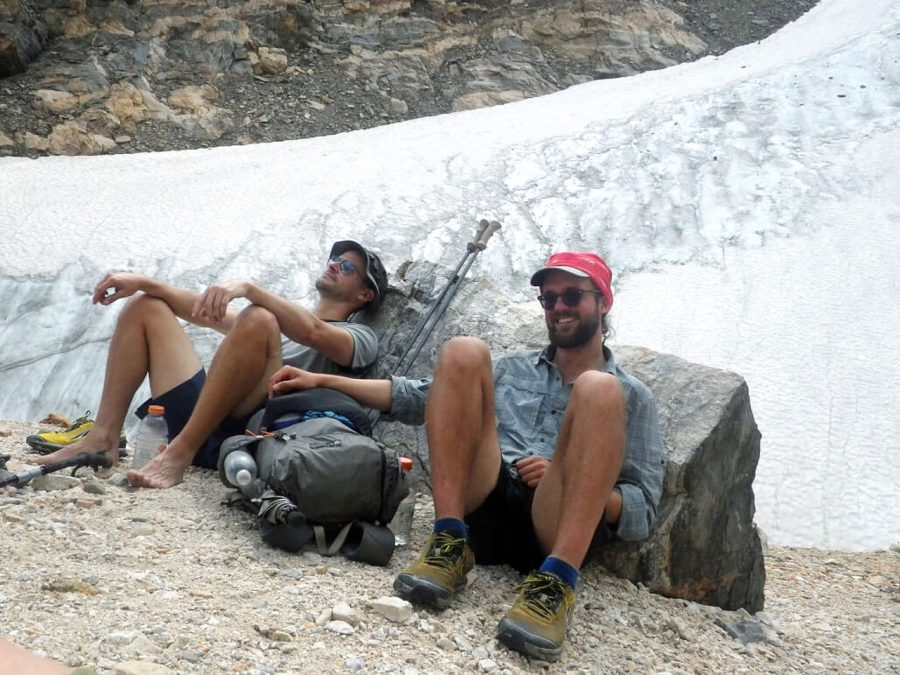
I wanted to Long Trails to include practical information about “people issues” that can make-or-break a hike. This includes how to stay in touch with friends and family while you are on the trail, but also how to communicate with well with other hikers along the way. Long Trails addresses how to choose a good hiking partner and what to do if you don’t like who you are hiking with.
An inspiration for my book is the book by Shin Hasegawa, Long Distance Hiking. It acknowledges that trail life has its up and downs—both physically and mentally. Sometimes, to be away from family and friends and civilization for so long can be difficult, especially for hikers like Hasegawa who are thru-hiking in a country that is not their home. I realized that although I had felt like trying to find information—or the right kind of information—for a thru-hike in English was difficult, when Hasegawa wrote his book, it was even more difficult to find information in Japanese. I was inspired by his idea to share everything he had learned with an audience that otherwise may not have had much access to thru-hiking information.
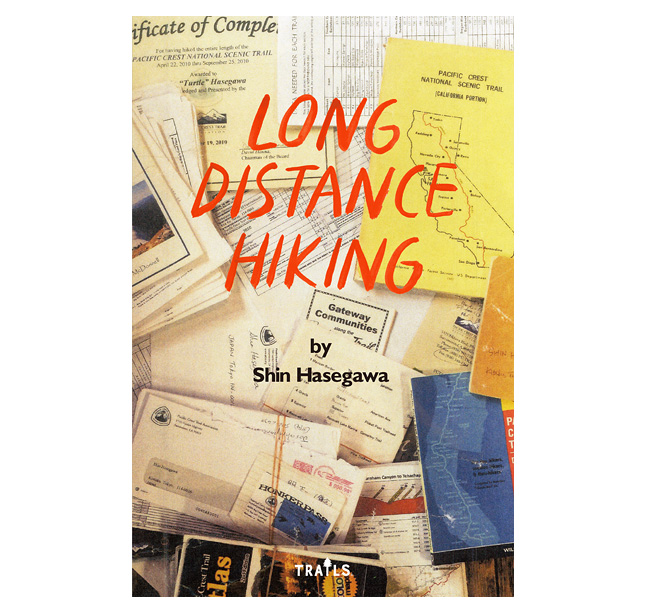
『LONG DISTANCE HIKING』(TRAILS)。
Even when circumstances may make it impossible for you to hike a long trip, sometimes just the process of planning can be part of the adventure. I’ve spent countless hours looking at maps, figuring out mileage, and thinking about campsites for trails that I may never actually hike. Many people are happiest when they are planning a trip—even happier than when they are on the trip itself. For me, the joy is in using my imagination to consider what it would be like to venture to an unknown area and explore.
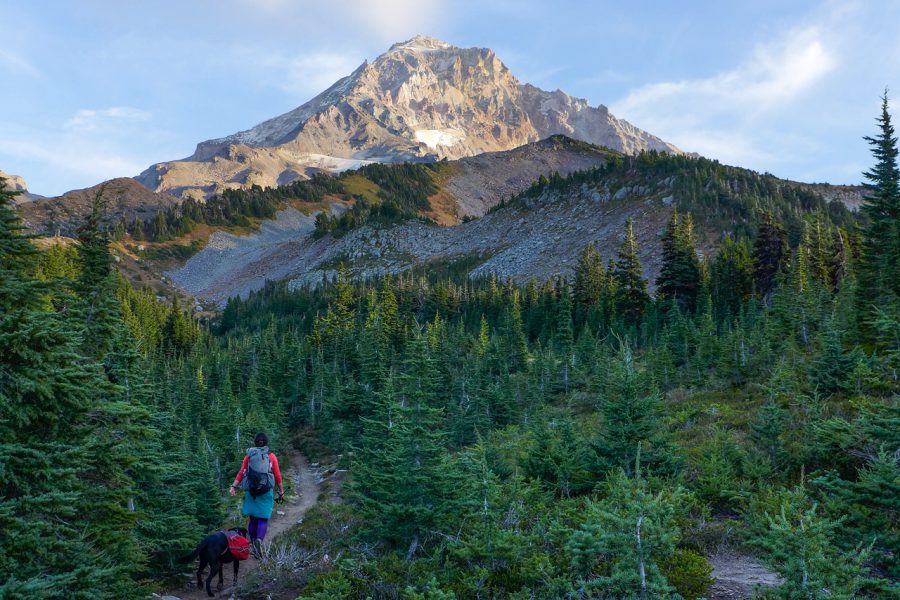
Hiking Mt. Hood on a beautiful day.
To me, having a dream is like a blank coloring book. Perhaps you have heard of a long trail but don’t know much about it other than it is long and where it goes. At that point, your dream is a fuzzy image in your head. It is still in black and white. Reading about others’ experiences on the trail—how they prepared, what gear they carried, what it was like out there—fills in the blank spots. Your dream goes into full color. You get to decide what color each blank spot will turn—which backpack you will take and when you will leave. But at the end, your plan starts to look like more than just a hazy vision, but a clear map forward.
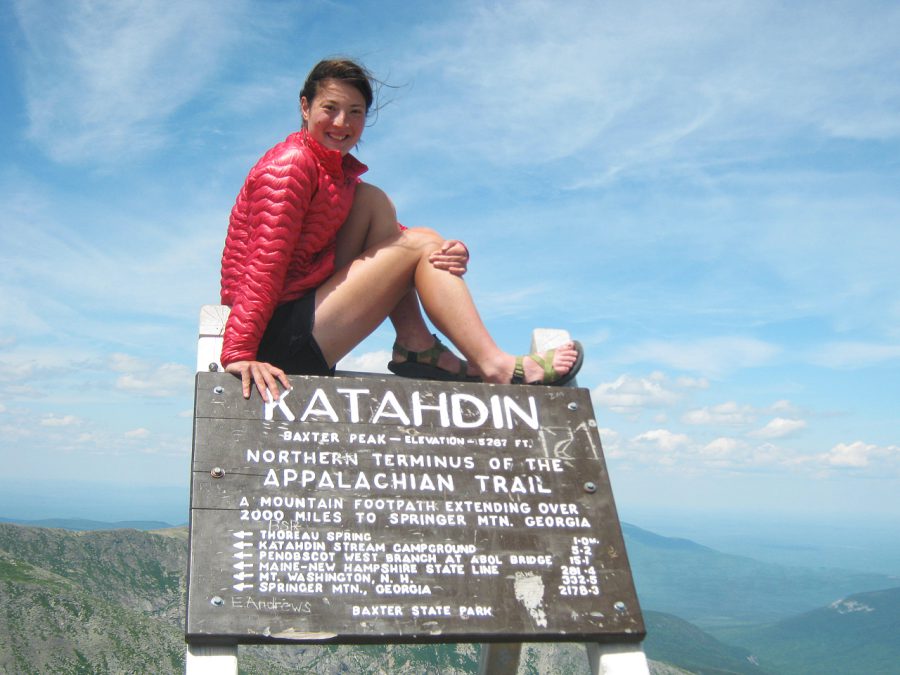
Liz Thomas on the Appalachian Trail
Related Articles
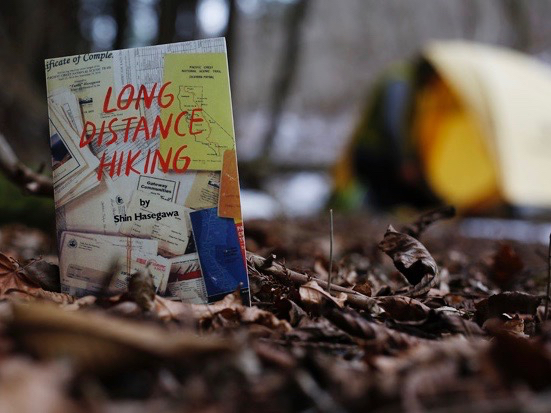
TRAILSの出版レーベル第一弾!「LONG DISTANCE HIKING」- 1月21日(水)発売

リズ・トーマスのハイキング・アズ・ア・ウーマン#15 / 日本人ハイカーはどう思われてる?<前編>アメリカ人ハイカーとPCTAの視点
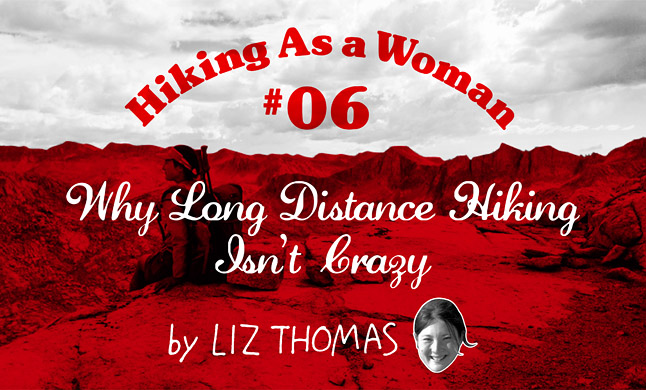
リズ・トーマスのハイキング・アズ・ア・ウーマン#06 / 長距離ハイキングはクレイジーな事?!
- « 前へ
- 2 / 2
- 次へ »
TAGS:

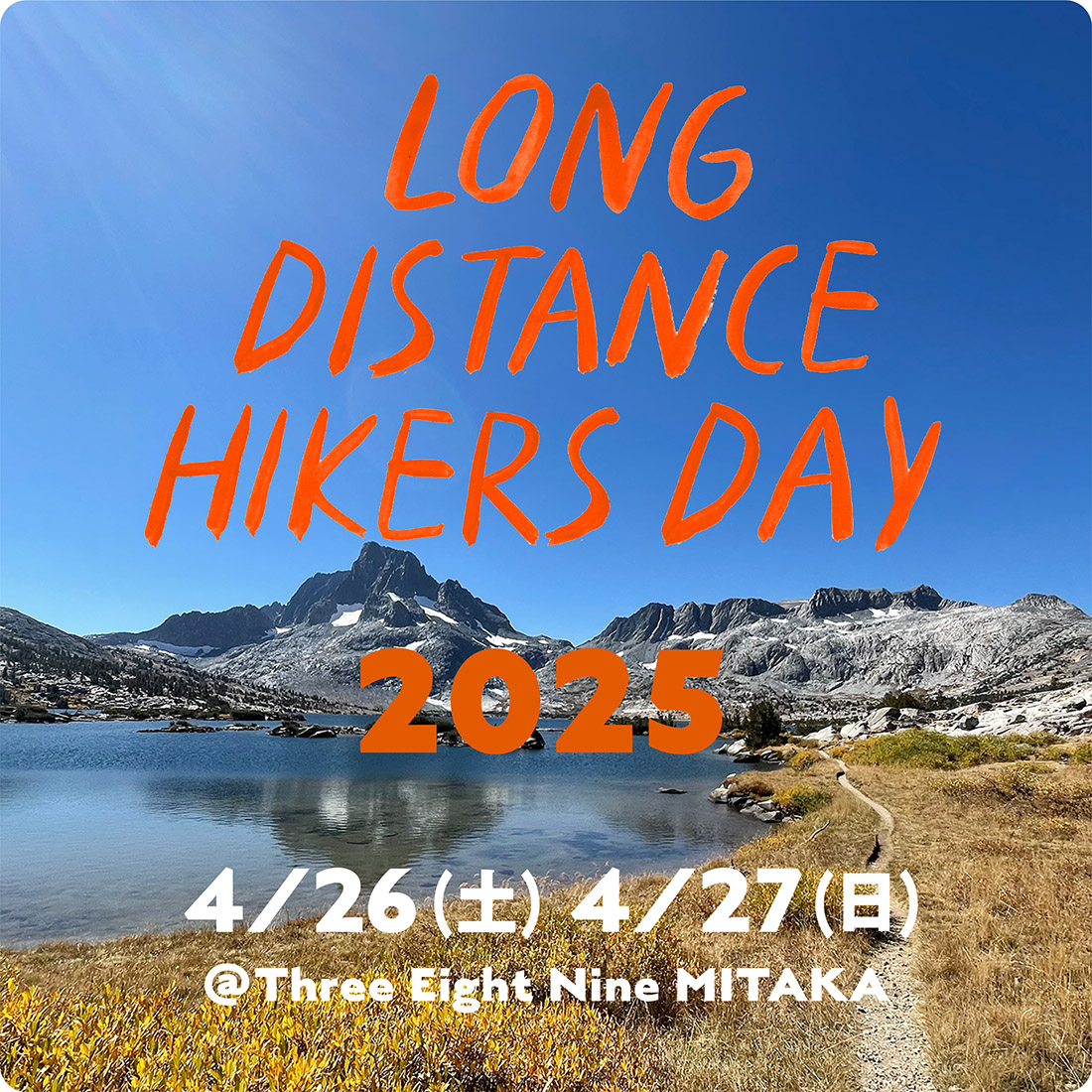
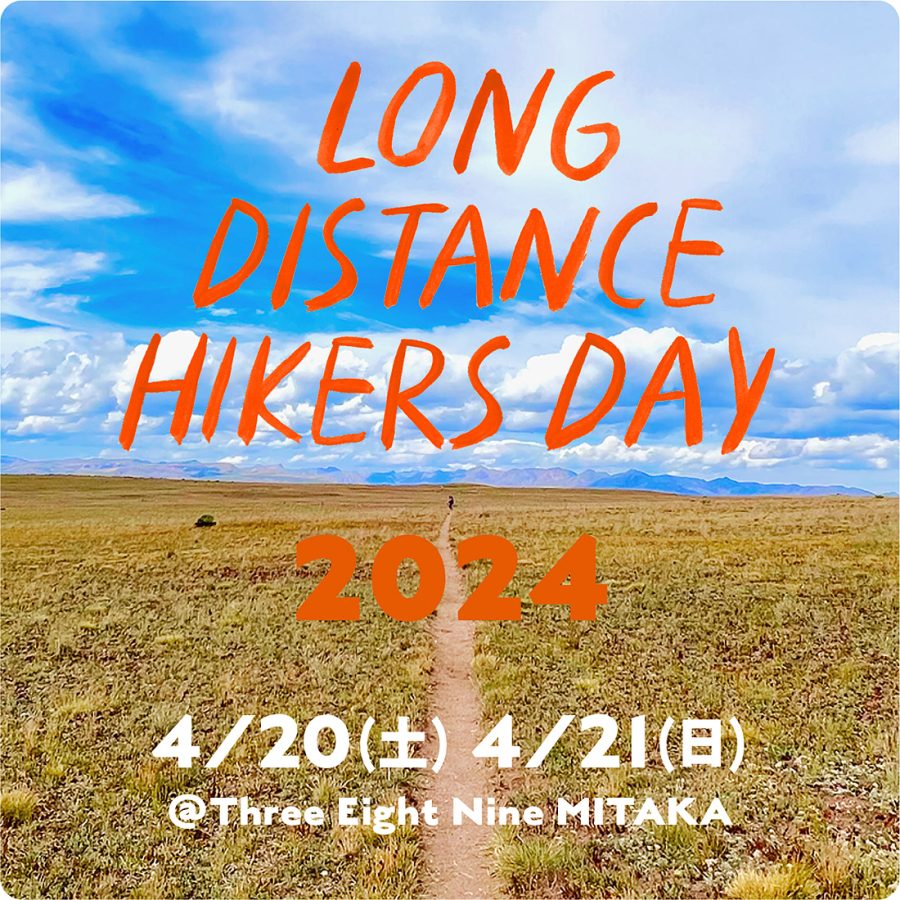
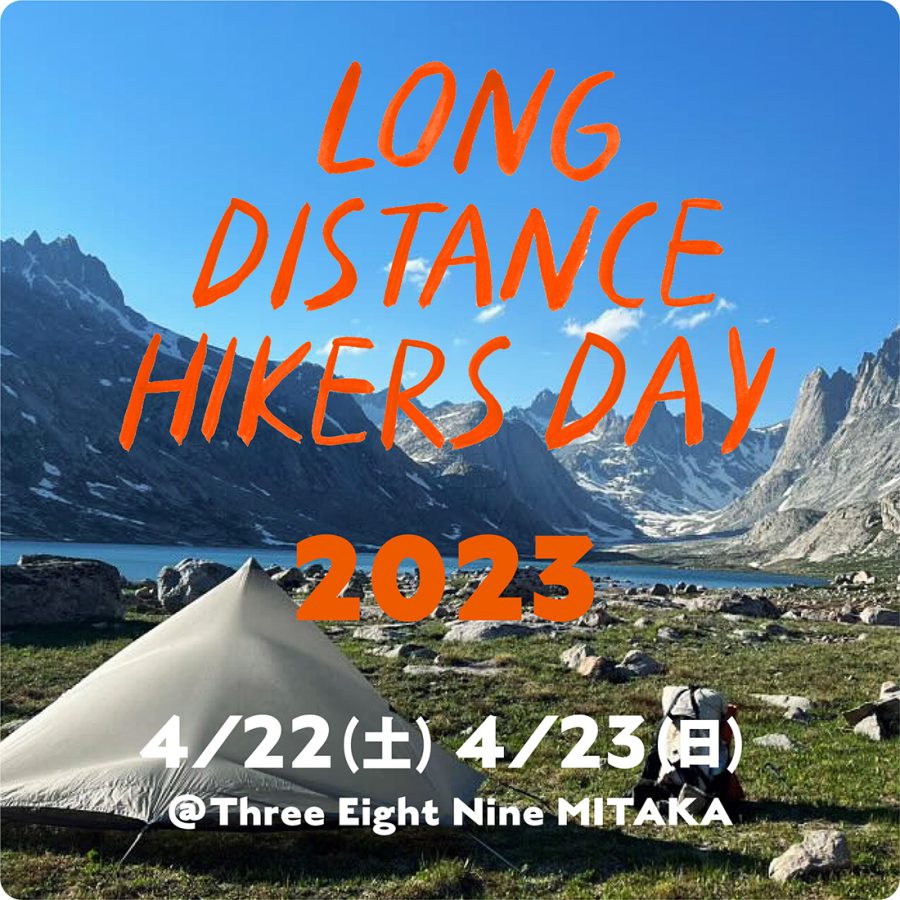










 ULギアを自作するための生地、プラパーツ、ジッパー…
ULギアを自作するための生地、プラパーツ、ジッパー…  ZimmerBuilt | TailWater P…
ZimmerBuilt | TailWater P…  ZimmerBuilt | PocketWater…
ZimmerBuilt | PocketWater…  ZimmerBuilt | DeadDrift P…
ZimmerBuilt | DeadDrift P…  ZimmerBuilt | Arrowood Ch…
ZimmerBuilt | Arrowood Ch…  ZimmerBuilt | SplitShot C…
ZimmerBuilt | SplitShot C…  ZimmerBuilt | Darter Pack…
ZimmerBuilt | Darter Pack…  ZimmerBuilt | QuickDraw (…
ZimmerBuilt | QuickDraw (…  ZimmerBuilt | Micro Pack …
ZimmerBuilt | Micro Pack … 














